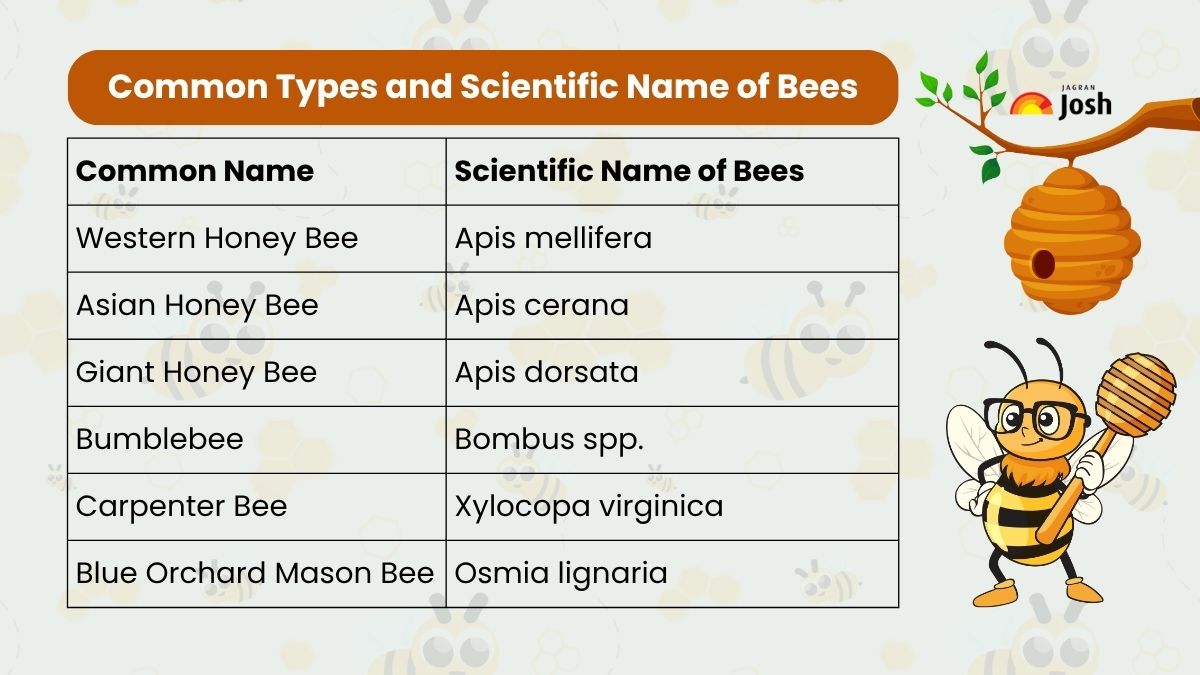Key Points
- Scientific name of bee is Apis mellifera (Western Honey Bee), part of the Apidae family.
- Bees are crucial pollinators, adding $18 billion to US agriculture annually.
- There are over 20,000 species; key types include Bumblebees and Mason Bees.
Scientific name of bee: The buzzing of bees is an integral part of our ecosystem, but the world of these crucial insects is Bees are an important part of our ecosystem, but their world is much more diverse and complicated than most people think. When one asks, "What is the scientific name of a bee?" they usually mean the common Western honey bee, which is called Apis mellifera in scientific terms. This species, which is part of the Apidae family, is very important for farming.
The U.S. Department of Agriculture (USDA) says that managed honey bee colonies pollinate crops worth at least $18 billion more each year. But reports from late 2024 and early 2025 have confirmed that honey bee colonies are dying off at an alarming rate. According to the Honey Bee Health Coalition, commercial beekeepers in the U.S. have lost an average of 62% of their colonies. We can learn more about this important species and the world of bees in general by knowing how to tell the difference between honey bees and other types of bees.
What is the Scientific Name of a Bee?
Apis mellifera is the scientific name that people most often use for the general term "bee." It is the binomial name for the Western Honey Bee or European Honey Bee. The name of the genus is Apis, and the name of the species is mellifera. The term Apis is Latin for "bee," and mellifera means "honey-bearing." This fascinating honey bee's Latin name places it within the large honey bee family, Apidae.
How Many Types of Bees are There?
The order Hymenoptera contains the clade Anthophila, which includes bees. There are over 20,000 different kinds of bees, and they are grouped into seven families. The Apidae family, which includes honey bees, bumblebees, and carpenter bees, is the most famous.

Here is a table with the scientific names of the genus and species of some of the most common and important types of bees out there in nature:
| Common Name | Scientific Name (Genus and Species) | Family | Key Characteristics |
| Western Honey Bee | Apis mellifera | Apidae | Most common managed pollinator globally; known for large colonies and honey production. |
| Asian Honey Bee | Apis cerana | Apidae | Native to Asia; smaller than A. mellifera; builds parallel combs inside cavities. |
| Giant Honey Bee | Apis dorsata | Apidae | Largest honey bee species; builds a single large, open comb often on cliffs or tall trees. |
| Bumblebee | Bombus spp. | Apidae | Large, fuzzy, round body; crucial for "buzz pollination" (e.g., tomatoes); social but smaller colonies. |
| Carpenter Bee | Xylocopa virginica | Apidae | Large, solitary bee; drills circular holes in wood to build nests. |
| Blue Orchard Mason Bee | Osmia lignaria | Megachilidae | A solitary bee; excellent early-spring pollinator; nests in hollow reeds or holes. |
5 Most Interesting Facts about Honey Bees
The honey bee is a real wonder of nature. These facts about honey bees' biology and behavior are amazing, even beyond their scientific name:
-
Five Eyes: Honey bees have five eyes: two big compound eyes and three smaller ocelli (simple eyes) on the top of their heads.
-
Speed: A worker bee can fly as fast as 15 miles per hour (24 km/h).
-
Making Honey: It takes about 2 million visits to flowers to make one pound of honey.
-
Distance of Flight: A healthy colony of about 60,000 bees flies the same distance every day as the distance from Earth to the moon!
-
Communication: They do a famous "waggle dance" to tell other bees where the best flower patches are.
What are Scientific Names in Biology?
Scientific names, like the honey bee's Latin name Apis mellifera, are part of a universal system in biology called binomial nomenclature. Carl Linnaeus formalized this system, which gives each species a unique two-part name: the Genus and the Species. The genus is always capitalized, and the name is always italicized (for example, Homo sapiens). This standardized naming system makes it easy for scientists from all over the world to find any organism. This helps avoid confusion that can happen when common names are different in different areas or dialects.
Also Read - What is the Scientific Name of Frog?
Knowing the scientific name of the Western honey bee, Apis mellifera, shows how it fits into the animal kingdom. As a key member of the Apidae family and an important pollinator for food security around the world, its survival is primarily linked to ours.
Comments
All Comments (0)
Join the conversation